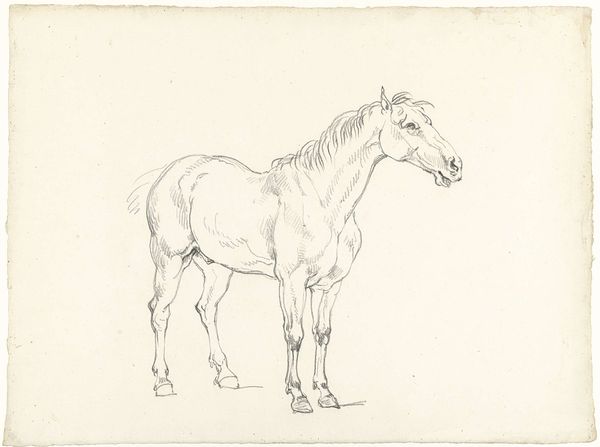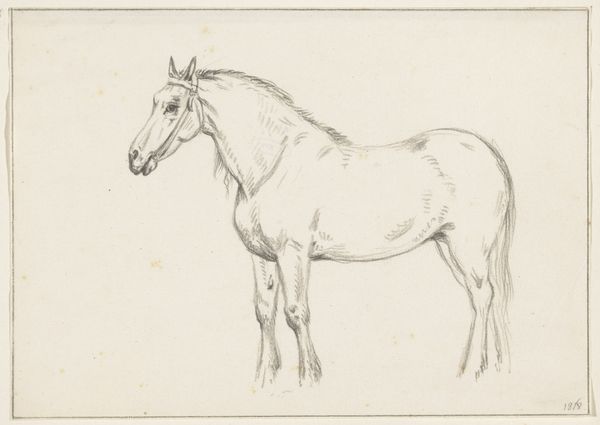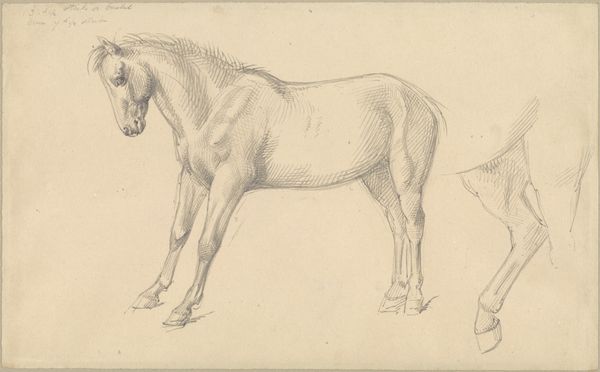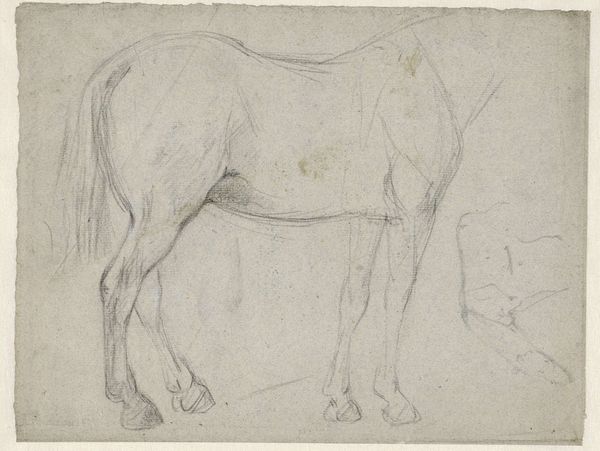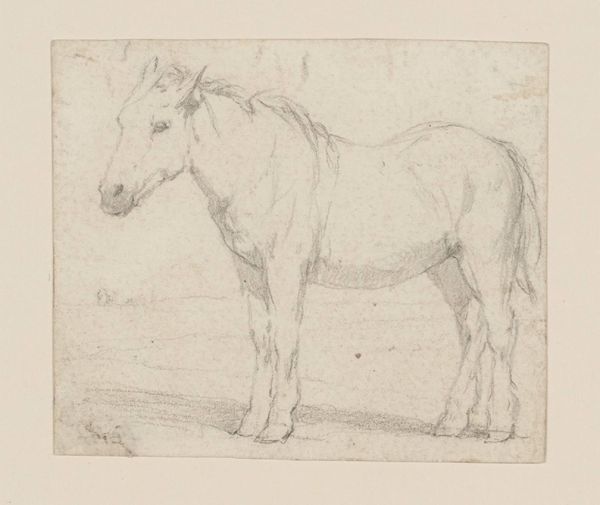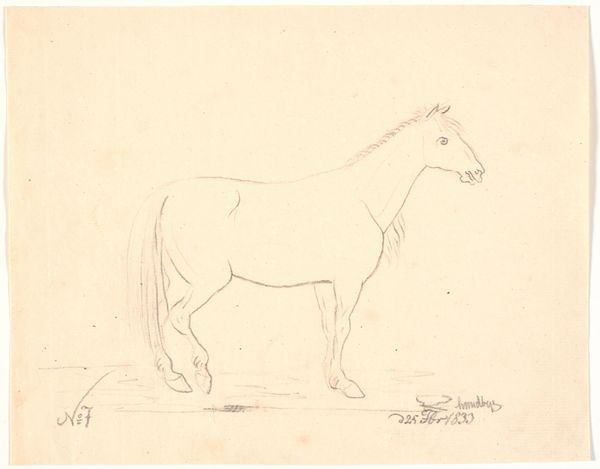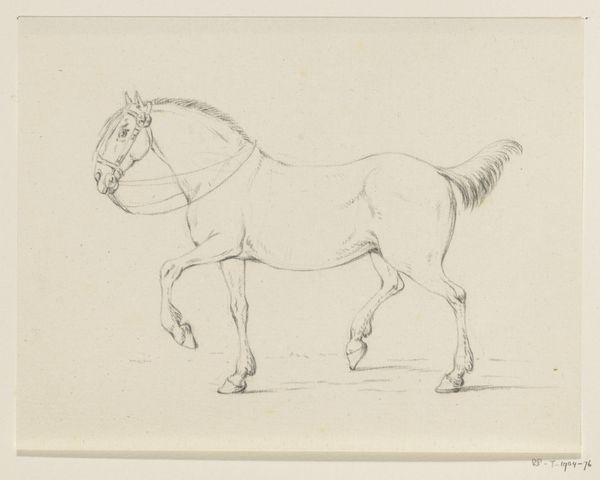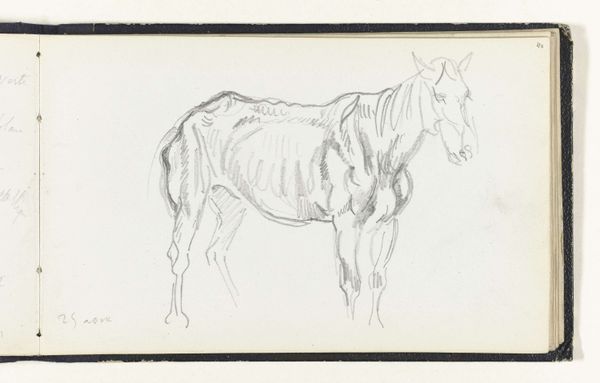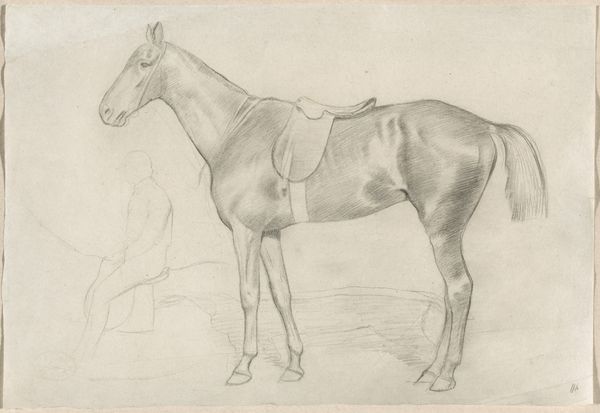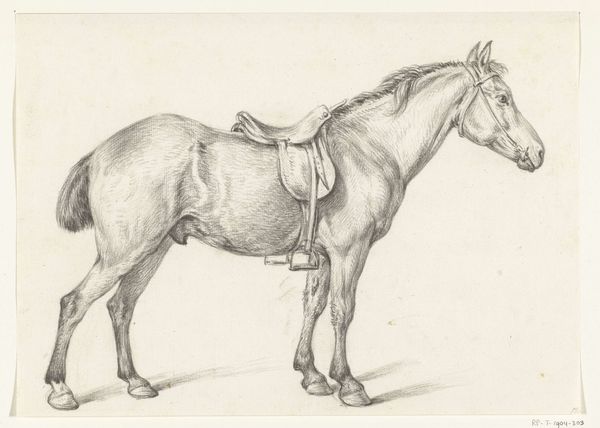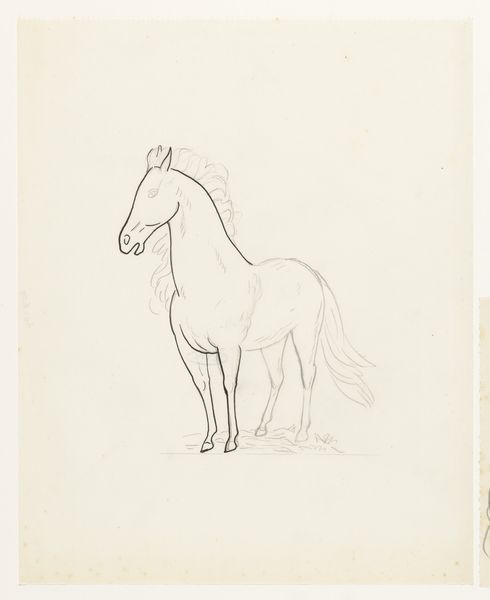
drawing, paper, pencil
#
portrait
#
drawing
#
landscape
#
paper
#
pencil
#
horse
#
realism
Dimensions: height 441 mm, width 592 mm
Copyright: Rijks Museum: Open Domain
Curator: Let's explore this sketch a little. This is Hendrik Voogd's "Studie van twee paarden, naar links" - Study of two horses, facing left, made sometime between 1788 and 1839. It's a pencil drawing on paper. Editor: Immediately I see a certain quiet grace. The larger horse is so gently rendered; it feels almost like a memory surfacing. There’s a tenderness in those lines, a contemplative energy. Curator: That gentleness is quite striking, and invites discussion about 18th and 19th century portrayals of animals and class. The relationship between humans and animals, particularly horses, spoke to notions of wealth, labour, and power. Equine portraiture served as potent symbolism within the power structures of the time. Editor: And doesn't it strike you as odd that one is far more detailed than the other? What a phantom the background horse seems. Were they studies from life, from memory... Or imagination? They aren't precious, or idealized at all. They have that slightly weary quality of an animal used for work. Curator: Voogd might have indeed been exploring ways to capture movement and posture effectively. Think about the implications this holds considering equine labor at this historical conjuncture; they aren't celebrated for being beautiful creatures in service of elites, they appear burdened by the weight they carry... Voogd subtly highlights this reality. Editor: That's really profound. It reminds me of those early photographic studies of animals in motion, except Voogd does it with a human hand, conveying empathy rather than just scientific observation. Curator: It's the act of observing and recording that underscores this. The interplay of power dynamics—who gets depicted, how, and for what reason, reflecting broader socio-economic relations... Fascinating. Editor: Well, now I'm seeing those delicate lines not just as capturing a horse, but hinting at the system around it. It is hard to go back to just seeing the lines themselves! Curator: Right? It ceases to be just lines, shapes, and forms but stories waiting to be told through social reflection!
Comments
No comments
Be the first to comment and join the conversation on the ultimate creative platform.
